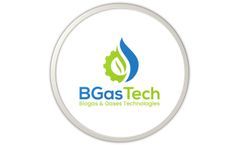Digester Gas Articles & Analysis
20 articles found
The process creates shorter fibers within plants which lead to smoother digestion and much less gas.2) Helps Foods Taste BetterThe carbonization process does greater than make foods simpler to chew it may help them retain their flavor. ...
Traditionally, it was installed in large plants, but it is currently installed in smaller plants due to economic reasons (use of digestion gas). This process does not require the supply of oxygen (which is an economic advantage). ...
Sydney Water has plugged in additional expertise and cogeneration power from Clarke Energy and D4C, contracting a further two INNIO Jenbacher J420, 1.5MW biogas to energy generating sets for their Malabar Wastewater Treatment Plant. The additional two gensets take the total to eleven similar biogas to energy cogeneration solutions that Clarke Energy has delivered for Sydney Water, providing an ...
Reasons for CHP Since 1985, EBMUD has been generating electrical power in Oakland from digester gas using three 2.1-MW combustion engines manufactured by the former Enterprise Engine Machinery Company. The facility began accepting high-strength wastes in 2002 that are trucked in from food processing operations, including wastes from wineries, animal processing ...
Among the sources of renewable energy is the production of biogas from landfill gas (LFG) or digester gas. The production of biogas is an anaerobic process in which micro-organisms break down (digest) biodegradable material in the absence of oxygen. ...
Santa Cruz Wastewater Treatment Facility, located in Santa Cruz, California, generates the majority of its own electric power by using internal combustion engines that burn a mixture of methane gas produced by the sewage digestion process and purchased natural gas. ...
Among the sources of renewable energy is the production of biogas from landfill gas (LFG) or digester gas. To monetize biogas and create the most efficient fuel sources, it is critical to accurately measure how much biogas is produced in each stage of the process. This biogas boom has created an opportunity for industrial gas ...
Digester: 2 x 5.000 m³ Post Digester: 3.400 m³ Gas storage: 3.250 m³ Input substrates: primary and secundary sludge, food waste Scope of services: concept creation, consulting, detail engineering, delivery of equipment, general project supervision, start-up, operational support and service Estimatet completion date: ...
Digester: 650 m³ (hydraulic digester) Gas storage: 280 m³ Input substrates: food waste Scope of services: concept creation, consulting, detail engineering, delivery of equipment, general project supervision, start-up, operational support and service Start-up: 1996 / reconstruction ...
Through technologies like anaerobic digestion, wastewater treatment plants can make use of wastewater’s latent energy. ...
Allens Farm anaerobic digestion (AD) facility is located within the beautiful countryside of Colchester, which is said to be the oldest recorded town in Great Britain. ...
Los Angeles County Sanitation Districts have long been involved with recovering landfill and digester gas for energy to power turbines and internal combustion engines. ...
The influence of two pretreatment methods, thermal treatment and low-pressure wet oxidation, on the sludge digestion efficiency was examined. Batch thermophilic anaerobic digestion was used to evaluate the effectiveness of the pretreatment methods in terms of volatile suspended solids (VSS) digestion efficiency and gas ...
Direct mass flow meters give precise mass flow measurement data with one instrument without extra instrumentation and maintenance costs. Clean solution for measuring digester gas – Digester gas in particular is often very dirty, and can easily gum up a turbine meter or plug the holes in a pitot tube, increasing maintenance ...
Clarke Energy have been contracted by Worley Parsons on behalf of Sydney Water to design, supply and commission the GE Jenbacher cogeneration engine package, with exhaust gas heat recovery. The engines use the sewage gas produced by the on-site digesters to produce renewable power. In turn the heat generated by the engines through the combustion ...
Co-digestion is the process in which wastes from various sources are treated together. Therefore, more organic carbon is added to make efficient use of existing digesters. The objectives of this study were to compare potential co-digestates, determine synergistic and antagonistic co-digestion outcomes and estimate economic ...
With rising energy costs and increasing environmental pollution, this paper looks at how treatment of biological waste is emerging as a cost-effective solution towards both these problems.Keywords: anaerobic digestion, biological waste, environmental pollution, autohydrolysate, biogas, biochemical oxygen demand, BOD, chemical oxygen demand, COD, digestion, ...
Its Waukesha 7042 GLD 820-kW engine, coined Cogeneration 1, burns a mixture of digester gas and purchased natural gas that is mixed with air to lower the BTU levels closer to digester gas. ...
Other activities include four municipal landfill gas extraction projects through which, two projects are being ready for power generation and some anaerobic treatment plants in industrial food processing factories. ...
This paper summarizes the process to handle the primary solids and the start-up process. Primary solids digestion is designed to handle approximately 47 dry tons per day. After thickening, the primary solids are digested in a two-phase anaerobic digestion process prior to dewatering through centrifuges. The first phase is thermophilic ...












